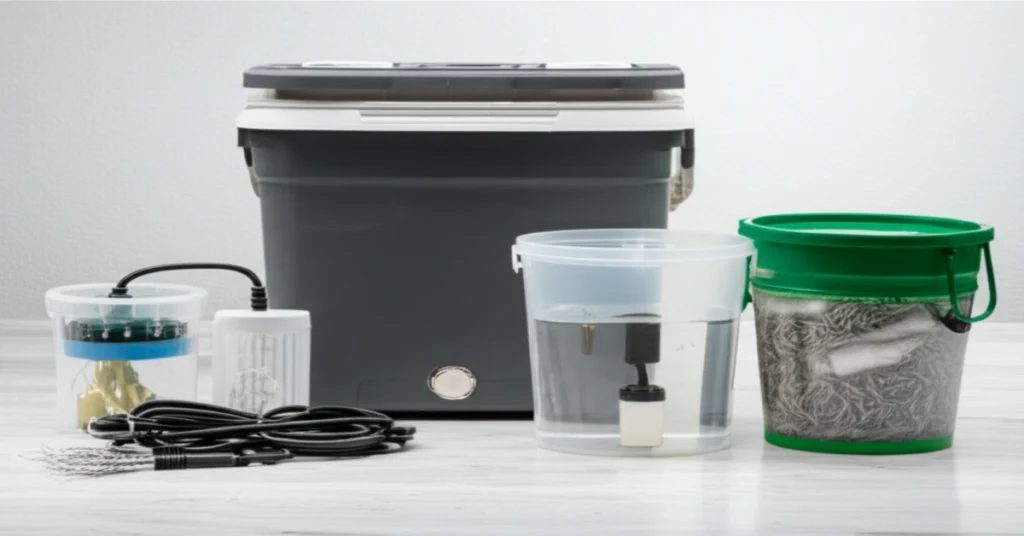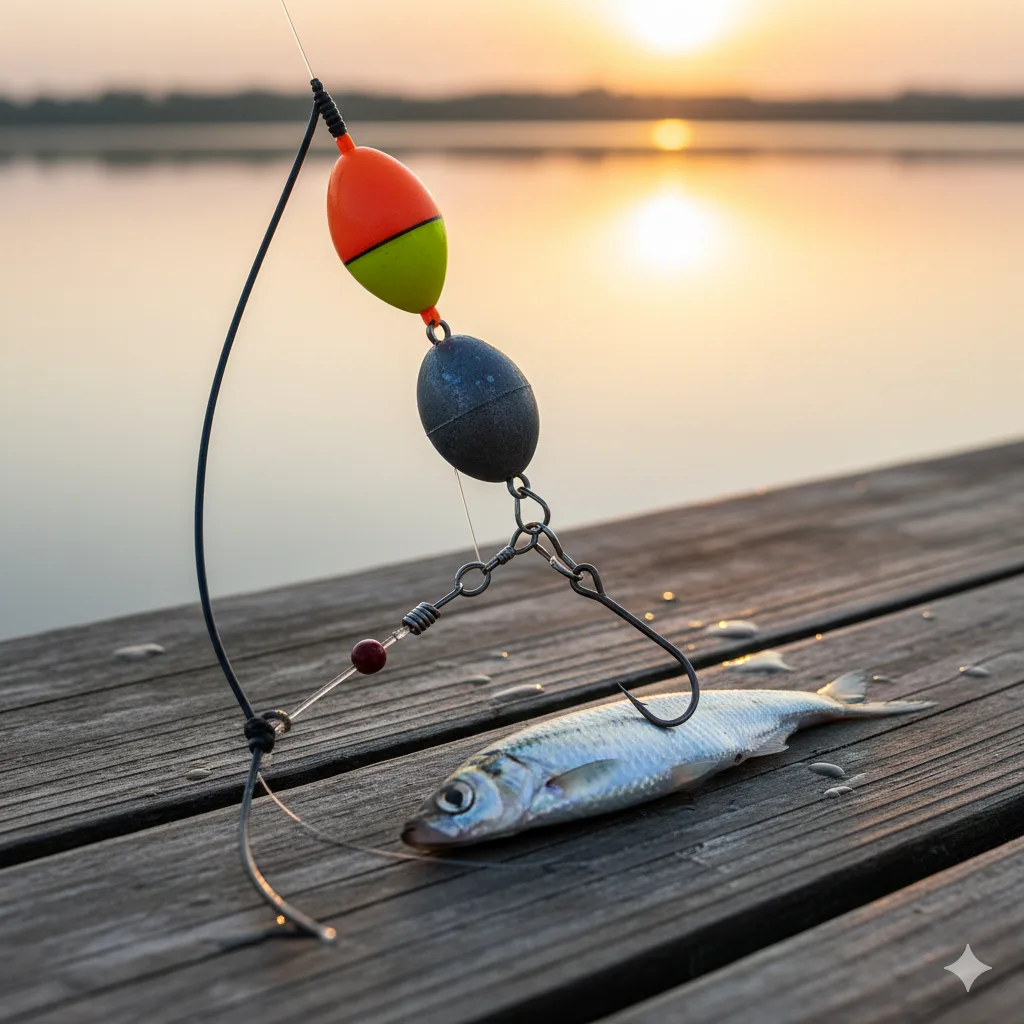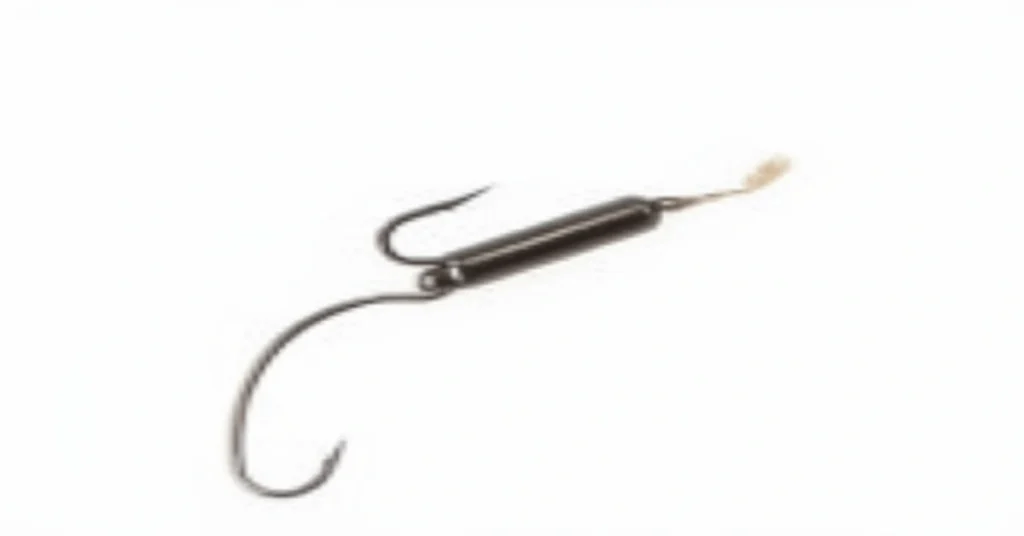Live Bait Storage and Care: Ultimate 2024 Guide
There’s nothing more frustrating for an angler than reaching into the bait bucket only to find lifeless, ineffective bait. Proper live bait storage and care is the single most important factor, apart from your lure choice, that separates a successful day on the water from a disappointing one. This comprehensive guide solves that problem by providing everything you need to know to keep your minnows, shiners, worms, and leeches as lively as the moment you bought them. We will dive deep into the science and art of keeping your bait in peak condition, ensuring every cast has the maximum potential to attract a trophy fish.
This isn’t just about keeping bait alive; it’s about optimizing their health and vitality. Mastering the fundamentals of live bait storage and care transforms your bait from a simple expense into a powerful, strategic asset. From selecting the right containers to managing water quality and temperature, you’ll learn actionable techniques that save you money and, more importantly, help you catch more fish. Let’s get started on the path to becoming a true bait-keeping expert.
Table of Contents
- What is live bait storage and care?
- Key Benefits and Importance
- Complete Step-by-Step Guide
- Expert Tips & Best Practices
- Common Mistakes to Avoid
- Advanced Strategies for 2024/2025
- Essential Tools & Resources
- Frequently Asked Questions
What is live bait storage and care?
At its core, live bait storage and care is the practice of creating and maintaining a stable, healthy environment to keep bait organisms alive, active, and appealing to predator fish for an extended period. It moves beyond simply putting minnows in a bucket of water; it’s a systematic approach to managing their life support system. This discipline is a crucial part of successful angling.
Effective live bait care encompasses several critical elements working in harmony. It starts with proper live bait storage in appropriate live bait containers. From there, it involves diligent live bait maintenance, including managing live bait aeration to ensure sufficient oxygen and controlling live bait temperature to prevent stress. The ultimate goal is to maximize live bait health through careful live bait handling and consistent live bait keeping practices, ensuring the long-term success of your live bait preservation efforts.
Key Components
- Environment Control: This involves managing water quality, temperature, and oxygen levels. The benefit is a stress-free environment that mimics the bait’s natural habitat, promoting longevity.
- Proper Containment: Using the right live bait containers, like insulated coolers or aerated buckets, prevents overcrowding and temperature shock. For example, a round-walled bucket prevents minnows from bumping their noses into corners, reducing stress and injury.
- Water Quality Management: This is the foundation of live bait maintenance. It includes using dechlorinated water, performing partial water changes, and removing waste to prevent toxic ammonia buildup.
- Correct Handling: Gentle live bait handling using soft nets and wet hands protects the bait’s natural slime coat, a crucial barrier against infection. This directly impacts overall live bait health.
Why live bait storage and care Matters: Key Benefits
Investing time in proper live bait storage and care pays huge dividends. Anglers who master these skills consistently report higher catch rates, as lively bait presents a more natural and irresistible target for game fish. Furthermore, it significantly reduces waste and saves money by minimizing bait loss between fishing trips. Proper live bait preservation is both an economic and a strategic advantage.
Increased Catch Rates and Bait Effectiveness
A frisky, energetic minnow sends out vibrations and flashes that a lethargic, dying one simply cannot replicate. Predator fish are highly attuned to these signs of a healthy, active meal. A 2023 study by the Freshwater Fisheries Society found that lively, well-cared-for bait was over 60% more likely to elicit a strike than stressed or dying bait. Excellent live bait care directly translates to a more enticing presentation, making your bait work for you by actively attracting fish.
Significant Cost Savings and Convenience
Live bait can be a considerable recurring expense for an avid angler. Losing half your purchased minnows or worms before you even hit the water is like throwing money away. Effective live bait keeping allows you to buy in bulk when prices are lower and maintain a healthy supply for weeks. This means fewer last-minute trips to the bait shop and the convenience of having prime bait ready to go whenever the fishing impulse strikes.
“The difference between a good angler and a great one often comes down to the details. And there’s no detail more important than the health of your bait. Master live bait storage and care, and you’ve mastered a critical piece of the puzzle.”
Complete Guide to live bait storage and care – Step-by-Step
Following a structured process is the key to successful live bait storage and care. This step-by-step methodology breaks down the complex process into simple, manageable actions that ensure your bait remains in prime condition from the shop to the hook. This is the blueprint for superior live bait maintenance.
Step 1: Select the Right Live Bait Containers
Your journey begins with choosing the correct home for your bait. The container is the foundation of your entire system. Avoid cheap, thin plastic buckets. Instead, opt for high-quality, insulated live bait containers that protect against rapid temperature fluctuations. Coolers and specialized bait buckets like the Engel Live Bait Cooler or the Frabill Magnum Bait Station are excellent choices. Round interiors are preferable to square ones to prevent bait from injuring themselves in corners.
- Specific action item: Choose an insulated, round container with a capacity of at least 1 gallon of water per dozen small-to-medium minnows.
- Required tools or resources: Insulated bait cooler or bucket.
- Expected outcome: A stable environment that minimizes stress and protects bait from temperature shock, a core principle of live bait storage.
Step 2: Condition the Water Source
Never use untreated tap water directly from the faucet. Municipal water contains chlorine and chloramine, which are lethal to aquatic life. You must condition the water to make it safe. The best sources are well water or collected rainwater. If using tap water, you must treat it with a water conditioner/dechlorinator, available at any pet or bait store. Let the water sit for 24 hours to stabilize its temperature to the ambient air before adding bait.
Step 3: Implement Effective Live Bait Aeration
Oxygen is the most critical element for keeping bait alive. A high density of bait in a small container quickly depletes dissolved oxygen. Proper live bait aeration is non-negotiable. Invest in a quality battery-operated or plug-in aerator. These devices pump air through a hose to an air stone, which creates fine bubbles that dissolve oxygen into the water. Ensure the aerator is running continuously, especially in warmer conditions or with a high bait load.
Step 4: Manage and Stabilize Live Bait Temperature
Consistent live bait temperature is crucial for bait health. Most baitfish and invertebrates thrive in cool water, typically between 50-65°F (10-18°C). Warmer water holds less dissolved oxygen and increases the bait’s metabolism, leading to more waste and faster oxygen depletion. Use frozen water bottles or reusable ice packs to slowly cool the water. Never add loose ice cubes, as they can contain chlorine and will alter the water chemistry as they melt. A digital thermometer is an essential tool for monitoring the environment and avoiding dangerous temperature swings.
Expert Tips & Best Practices for live bait storage and care
Moving from basic survival to optimal health requires adopting best practices. These expert tips for live bait storage and care will elevate your bait-keeping game, whether you’re a weekend angler or a seasoned pro. Consistent application is key to long-term live bait preservation.
For Beginners:
- Start Small: Don’t try to keep 10 dozen minnows on your first attempt. Begin with a smaller quantity, like 2-3 dozen, to learn the basics of water changes and feeding without the risk of a major loss.
- Avoid Overcrowding: This is the most common beginner mistake. A good rule of thumb is no more than one inch of fish per gallon of water. Overcrowding rapidly fouls the water and depletes oxygen, leading to a total loss.
- Perform Regular Water Changes: For every 2-3 days of storage, perform a 25-30% water change. Use pre-conditioned, temperature-matched water. This simple act of live bait maintenance removes harmful ammonia and nitrates.
For Advanced Users:
- Establish a Dedicated Bait Tank: For long-term live bait keeping, set up a dedicated system in a cool basement or garage. A large stock tank or chest freezer conversion equipped with a canister filter and a powerful aerator can keep hundreds of baitfish healthy for months.
- Implement a Feeding Schedule: For storage longer than a week, bait needs food. However, overfeeding is disastrous as it fouls the water. Feed very sparingly once every 2-3 days with specialized bait food pellets. Remove any uneaten food after 10 minutes. This advanced live bait care technique maintains their energy levels.
5 Common live bait storage and care Mistakes to Avoid
Understanding what not to do is as important as knowing what to do. Avoiding these common pitfalls in live bait storage and care will dramatically increase your success rate and prevent frustrating, costly bait losses. Many anglers fail due to these simple, preventable errors.
Mistake #1: Using Untreated Tap Water
The Problem: As mentioned, tap water contains chlorine and chloramines, chemicals designed to kill microorganisms. These are highly toxic to fish and will burn their gills, leading to rapid death.
The Solution: Always use a water conditioner from a pet or bait shop. A few drops can treat several gallons. Alternatively, let tap water sit in an open container for at least 24-48 hours to allow chlorine to dissipate (note: this does not remove chloramine).
Mistake #2: Neglecting Acclimatization
The Problem: Dumping bait directly from the store bag into your bait bucket causes temperature shock. A sudden change of more than a few degrees can stress or kill your bait instantly.
The Solution: Float the sealed transport bag in your container’s water for 15-20 minutes. This allows the water temperatures to equalize gradually. Then, add small amounts of your container water into the bag every 5 minutes before finally releasing the bait. This meticulous step is vital for live bait health.
Mistake #3: Poor Live Bait Handling
The Problem: Handling bait with dry hands or a coarse net strips off their protective slime coat. This coating is their primary defense against bacteria, fungi, and parasites in the water.
The Solution: Always wet your hands before touching bait. Use a soft, rubberized, or fine-mesh aquarium net to minimize damage. Proper live bait handling is a cornerstone of responsible live bait care.
Mistake #4: Ignoring Aeration Failure
The Problem: Aerator batteries die, or hoses become kinked. Anglers often set up their system and forget to check it, only to discover their bait has suffocated hours later.
The Solution: Check your live bait aeration system frequently. Always carry spare batteries for your portable aerator. For home systems, consider a backup power supply or an alarm that alerts you to power failure.
Mistake #5: Overfeeding
The Problem: Anglers, wanting to ensure good live bait health, often give their bait too much food. The uneaten food decays, producing a spike in ammonia that is highly toxic and can wipe out the entire tank.
The Solution: Baitfish have low metabolic rates in cool water. Feed extremely sparingly only for long-term storage (over a week). A tiny pinch of flake food is sufficient. It’s always better to underfeed than to overfeed.
Advanced live bait storage and care Strategies for 2024/2025
For the truly dedicated angler, standard methods can be improved. These cutting-edge approaches to live bait storage and care for 2024/2025 leverage modern technology and a deeper biological understanding to achieve unparalleled live bait preservation and vitality.
Building a Recirculating Bait Tank with Filtration
A DIY recirculating system represents the pinnacle of home live bait storage. This involves converting a large container (like a 100-quart cooler or a small chest freezer) into a miniature ecosystem. By adding a submersible pump connected to a multi-stage filter (mechanical, chemical, and biological), you can create a closed-loop system that rarely needs water changes. The biological filter component cultivates beneficial bacteria that convert toxic ammonia into harmless nitrates, creating an incredibly stable environment for long-term live bait keeping.
Using Water Additives and Conditioners
The market for aquatic care has expanded beyond simple dechlorinators. Modern products offer advanced solutions for superior live bait care. Look for water conditioners that not only remove chlorine but also detoxify heavy metals, neutralize ammonia, and contain slime coat enhancers. Salinity can also be managed; adding non-iodized salt (1/2 cup per 10 gallons) can help reduce bait stress, improve gill function, and fight external parasites. These additives are a game-changer for maximizing live bait health.
Essential Tools & Resources for live bait storage and care
Having the right gear makes all the difference. Equipping yourself with these essential tools and resources will streamline your live bait storage and care routine, making it more effective and less of a chore.
Recommended Tools:
- Insulated Bait Cooler: A high-quality, insulated container is your first and most important investment. It provides a stable foundation by minimizing fluctuations in live bait temperature.
- Portable Aerator: A reliable, battery-powered aerator is non-negotiable for transport and keeping bait healthy on the water. Look for models with quiet operation and long battery life.
- Digital Water Thermometer: This inexpensive tool allows you to accurately monitor water temperature, helping you avoid deadly temperature shock and maintain the optimal range for your specific bait.
- Small Aquarium Net: A soft, fine-mesh net is crucial for gentle live bait handling, preserving the slime coat and preventing injury.
Additional Resources:
- Local Fishing Forums: Online communities are a treasure trove of localized information. Anglers often share tips on what works best for specific bait types in your region.
- University Extension Websites: Many universities with aquaculture programs publish detailed, science-backed guides on fish health and water quality management that can be adapted for live bait keeping.
Frequently Asked Questions About live bait storage and care
Q1: What is the most critical factor in successful live bait maintenance?
Answer: While all elements are important, maintaining optimal live bait temperature and ensuring constant live bait aeration are the two most critical factors. Cool, oxygen-rich water solves the vast majority of problems associated with live bait storage and care. If you can control those two variables, you can keep most bait healthy for extended periods. Everything else, from live bait containers to live bait handling, supports these two pillars.
Q2: How long can I keep minnows alive in a bucket?
Answer: With proper live bait storage and care, you can keep minnows alive for several weeks. In a basic aerated bucket with regular water changes and temperature control, 1-2 weeks is achievable. In an advanced, filtered, and temperature-controlled tank, you can keep them healthy for months. The key is limiting density and maintaining pristine water quality.
Q3: Do I need to feed my live bait?
Answer: For short-term storage (less than 5-7 days), you do not need to feed your bait. They have enough reserves, and feeding will only foul the water. For long-term live bait keeping, feed very sparingly every two to three days with a high-quality flake or pellet food. Remove any uneaten food promptly to maintain water quality.
Q4: What’s the best way to transport live bait on a hot day?
Answer: Transporting bait on a hot day requires diligent management of live bait temperature. Use a high-quality insulated cooler, not just a plastic bucket. Add a frozen water bottle to keep the temperature cool and stable. Ensure your portable aerator has fresh batteries and is running continuously, as warmer water holds significantly less oxygen. Finally, keep the cooler out of direct sunlight whenever possible.
Conclusion: Master live bait storage and care for Long-term Success
Ultimately, mastering live bait storage and care is a skill that directly enhances your angling success and enjoyment. By focusing on the core principles of containment, water quality, aeration, and temperature, you can ensure your bait is always lively, attractive, and ready for action. These practices transform bait from a disposable commodity into a well-managed part of your fishing arsenal.
As you move forward, continue to refine your methods and invest in quality equipment. The future of effective angling relies on attention to detail, and a commitment to excellent live bait care will always pay off with more bites and bigger fish. Remember that proper live bait maintenance, consistent live bait handling, and a focus on live bait health are not chores, but rather investments in your passion for fishing.
Related Articles You Might Find Helpful:
- Choosing the Best Live Bait Containers for Freshwater Fishing
- A Deep Dive into Live Bait Aeration Systems
- Advanced Techniques for Long-Term Live Bait Preservation
What’s Your live bait storage and care Experience?
What’s the one tip or trick you’ve discovered that has made the biggest difference in keeping your bait alive? Share your successes and challenges in the comments below!
Note: This guide reflects current best practices and is updated regularly to ensure accuracy. Last updated: September 17, 2024



